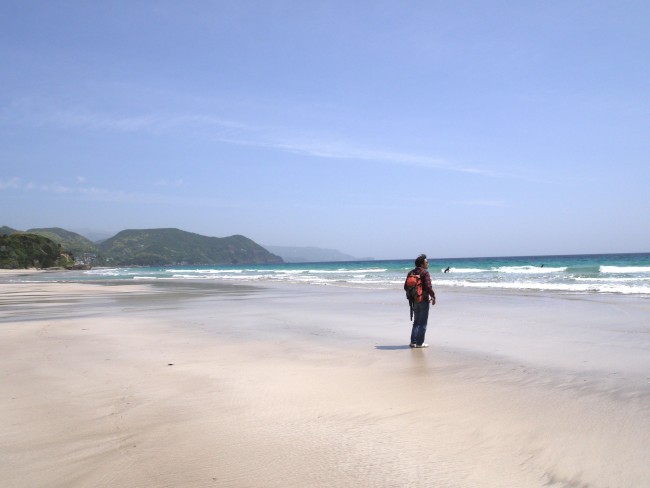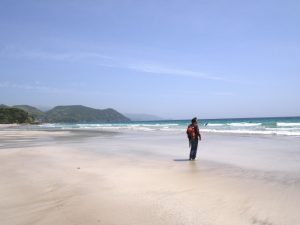
Hi there, how is everybody? Did you all enjoy the Golden Week holidays? As oceanographers, of course, we used the opportunity to take a picture of the beautiful ocean (see above). In view of the rather chilly water temperatures, however, we refrained from swimming. Speaking of ocean temperatures, you might already know that these influence climate the world over. Case in point: the expected occurrence of La Niña this summer is likely to increase heat waves in Japan. Another climate phenomenon, the Indian Ocean Dipole, is forecast to assume its negative phase in the following months. This tends to lead to cooler than normal Japanese summer temperatures. So how will these two climate modes develop over the next months and what will be their combined effect on this year’s summer in Japan?
Air temperature and rain for the period June through August
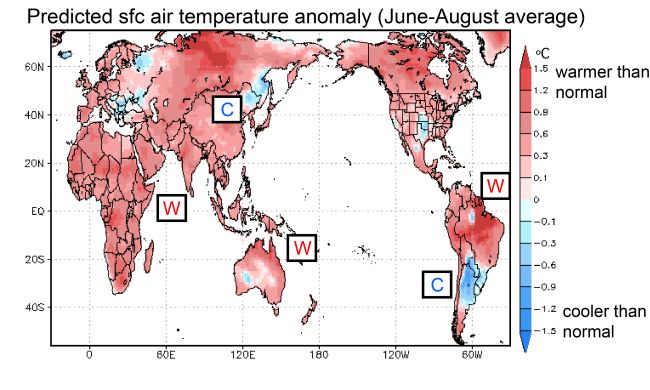
As you can see from Fig. 1, SINTEX-F predicts warmer than average temperatures pretty much everywhere on the globe. A few exceptions are northeast China and southern South America. These predictions haven’t changed much since last month’s issue.
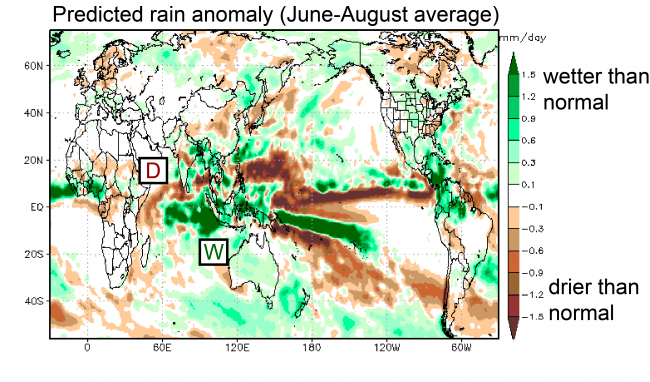
As for precipitation, SINTEX-F predicts lower than average rainfall over East Africa and parts of India (Fig. 2). Indonesia and Australia, on the other hand, will see higher than normal rainfall. These predictions, too, are very similar to those of last month.
Ocean temperatures for the period June through August
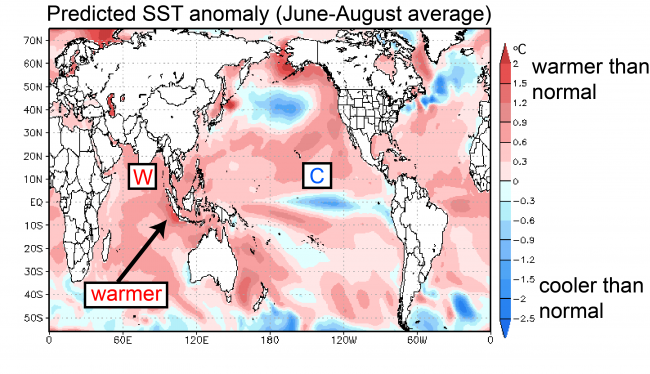
In difference to the day-to-day weather, climate variations on seasonal timescales are heavily influenced by ocean temperatures, particularly those at the surface, which are also called sea-surface temperatures or SST for short (reference: about seasonal climate prediction). While SSTs in the central and eastern tropical Pacific are still warmer than average due to the ongoing El Niño, the warm anomalies continue to weaken. The SINTEX-F prediction suggests that El Niño will essentially terminate this summer and that slightly cooler than average SST will develop in the eastern tropical Pacific (Fig. 3). For the remaining part of the year there is some chance that La Niña conditions will form, with further cooling in the eastern tropical Pacific and warming in the western tropical Pacific.
In the Indian Ocean, on the other hand, warmer than average SST will persist throughout summer (Fig. 3). However, on closer inspection, it appears that the eastern tropical Indian Ocean (along the Sumatra coast) will warm relative to the western tropical Indian Ocean. This can be considered the negative phase of the Indian Ocean Dipole, and the prediction indicates that this condition will continue into fall.
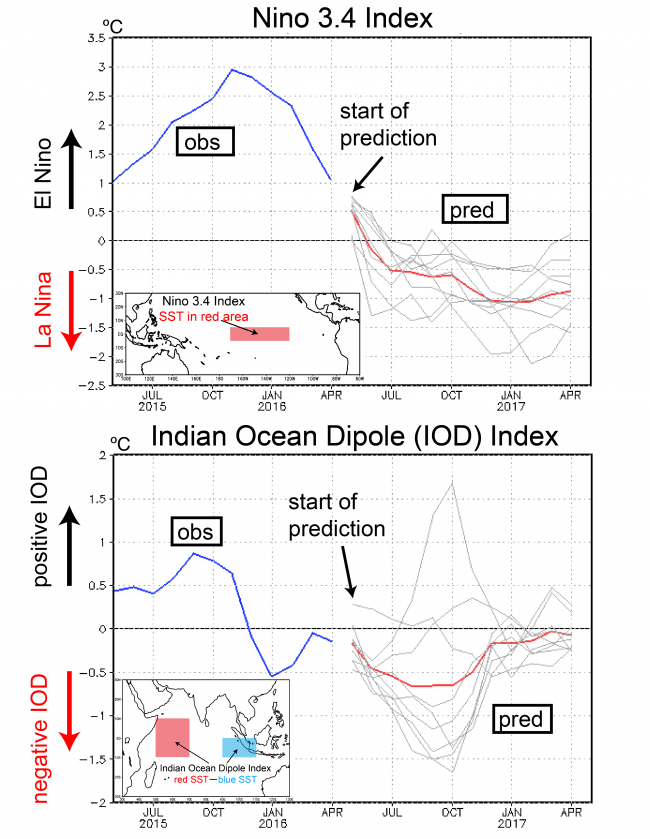
So what is the extended outlook for both La Niña and the negative Indian Ocean Dipole? Figure 4 shows the predicted evolution of SST anomalies in the regions where the two phenomena are most clearly expressed. The predicted ensemble mean Niño 3.4 index (red line in Fig. 4) shows temperatures below -0.5 C starting from July, with La Niña gradually strengthening toward the end of the year. The Indian Ocean dipole index also drops below -0.5 C from July but increases again starting from October, indicating that the event will terminate toward the end of the year.
El Niño-Southern oscillation (ENSO) is not the only climate phenomenon with ramifications to Japan and the world over. The Indian Ocean dipole, too, has global climate impacts. According to the SINTEX-F predictions, both La Niña and the negative Indian Ocean dipole will be gradually developing this summer. La Niña tends to increase the probability of heat waves around Japan, while the Indian Ocean dipole tends to bring cooler than normal summers. How these two climate phenomena will progress over the next months and which of them will dominate the Japanese summer will be the center of our attention over the coming weeks.

